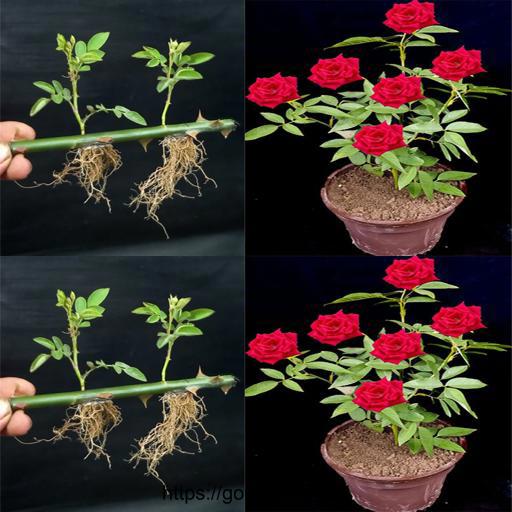Unleash Your Green Thumb: Mastering Rose Plant Propagation 

Are you a gardening enthusiast looking to expand your plant collection? Propagating roses can be a rewarding and cost-effective way to grow your garden. With a little knowledge and practice, you can unleash your green thumb and master the art of rose plant propagation.
Understanding Rose Plant Propagation
Rose plant propagation refers to the process of creating new rose plants from existing ones. There are several methods you can use to propagate roses, including cutting, layering, and grafting. In this article, we will focus on the most common and beginner-friendly method: propagating roses from cuttings.
Propagating Roses from Cuttings
Propagating roses from cuttings is a simple and effective way to create new plants that are genetically identical to the parent plant. Follow these steps to propagate roses from cuttings:
- Choose a healthy, disease-free rose plant to take cuttings from. Select a stem that is green, firm, and about 6-8 inches long.
- Using a sharp, sterile knife or garden scissors, cut the stem at a 45-degree angle just below a leaf node. Remove any flowers or buds from the cutting.
- Remove the lower leaves from the cutting, leaving only a few leaves at the top.
- Dip the cut end of the stem into a rooting hormone to promote root development.
- Plant the cutting in a pot filled with a well-draining medium, such as a mix of perlite and peat moss. Water the cutting thoroughly.
- Place the pot in a warm, bright location away from direct sunlight. Keep the soil consistently moist but not waterlogged.
- Avoid disturbing the cutting while it roots, which can take several weeks to a few months.
- Once the cutting has developed a healthy root system, transplant it into a larger container or your garden.
Tips for Successful Rose Plant Propagation
Here are some additional tips to help you successfully propagate roses from cuttings:
- Choose the right time: The best time to take rose cuttings is in the early summer when the plant is actively growing.
- Use a rooting hormone: Rooting hormones help stimulate root growth and increase the success rate of propagation.
- Provide the right environment: Keep the cuttings in a warm, humid environment to encourage root development.
- Monitor for pests and diseases: Keep an eye out for any signs of pests or diseases on the cuttings and take appropriate action if needed.
- Be patient: Rooting and establishing new plants takes time, so be patient and consistent in your care.
Benefits of Rose Plant Propagation
Propagating roses can offer several benefits to gardeners, including:
- Cost-effectiveness: Propagating roses from cuttings is a budget-friendly way to expand your garden.
- Genetic preservation: By propagating from existing plants, you can preserve the genetic characteristics of your favorite roses.
- Personal satisfaction: Watching your cuttings grow into healthy plants can be a rewarding experience for any gardener.
Mastering rose plant propagation can be a fun and fulfilling endeavor for gardeners of all levels. With the right knowledge, tools, and care, you can successfully propagate roses and add beauty to your garden. Unleash your green thumb and start propagating roses today!





 #SummerBeauty #DIYHacks #FashionTips #BeautyHacksByBlossom
#SummerBeauty #DIYHacks #FashionTips #BeautyHacksByBlossom